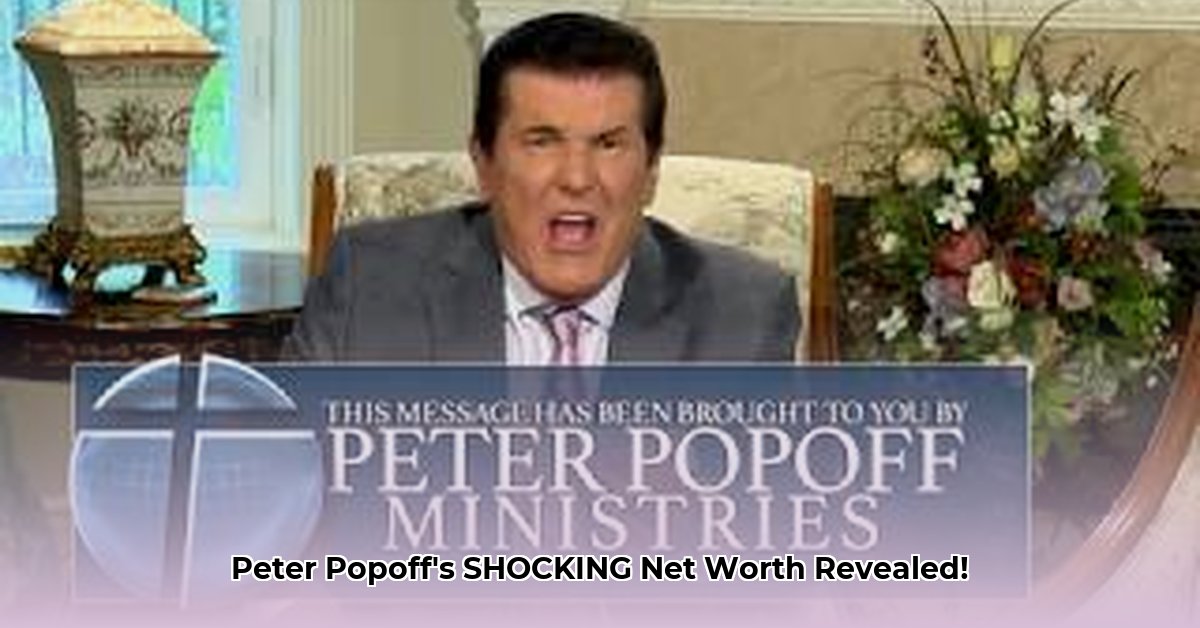
Unraveling the Mystery: Peter Popoff's Financial Empire
Peter Popoff, the charismatic televangelist known for his faith-healing demonstrations, has amassed significant wealth throughout his career. However, pinning down the exact figure of his net worth proves surprisingly difficult. While estimates place his fortune in the range of $10 million, the lack of financial transparency surrounding his ministry significantly complicates any definitive assessment. This article delves into the complexities of Popoff's financial dealings, exploring the sources of his income and the ethical implications of his practices.
The Mechanisms of Wealth: How Does Popoff Generate Income?
Popoff's financial success stems primarily from two key sources: donations and the sale of religious merchandise. Donations from his devoted followers undoubtedly constitute a substantial portion of his income. However, the precise amount remains unknown due to a lack of publicly available financial statements. The second significant revenue stream is generated through the sale of religious products, including "miracle water" and books promoting divine intervention. While the exact contribution of merchandise sales to his overall wealth is unclear, it is considered a major factor. This opaque financial picture makes accurate estimation challenging, highlighting a critical need for greater transparency within religious organizations.
A Career Marked by Controversy: Popoff's Rise and Fall (and Rise Again)
Popoff's journey to financial success has been far from linear. His ministry soared to popularity in the 1980s, but this period of prosperity was followed by a steep decline after exposés alleging fraud. Investigations, notably those conducted by James Randi, a renowned magic debunker, revealed claims of planted audience members and hidden communication devices used to seemingly predict audience members' medical conditions. These revelations severely damaged his reputation, culminating in bankruptcy. Despite this setback, Popoff experienced a remarkable resurgence, re-establishing his ministry and maintaining a tax-exempt status. This raises several important questions: How did he rebuild his wealth after such significant setbacks? What strategies were implemented to regain the trust and financial support of his followers? And, more critically, what ethical standards should we apply to his fundraising practices?
The Complexities of Tax-Exempt Status: Accountability and Transparency
Popoff's ministry operates under a tax-exempt status, a significant financial advantage that allows it to avoid paying taxes on income. However, this status also necessitates a higher level of accountability and transparency regarding the use of funds. The absence of comprehensive public financial reports raises concerns about the proportion of income dedicated to charitable causes versus personal enrichment and operational expenses. This lack of transparency fuels debate, with interpretations ranging from divine blessing to questionable business practices. Popoff's case serves as a potent example of the ethical challenges inherent in the intersection of religion and commerce.
The Elusive Truth: The Need for Open Financial Reporting
A primary challenge in accurately determining Popoff's net worth is the significant lack of public financial information. This absence of transparency fuels suspicion and makes it virtually impossible to confidently ascertain the ministry's income, expenses, and the proportion allocated to charitable ventures versus personal use. The resulting debate emphasizes the importance of accountability and open financial reporting within religious organizations. Transparency is crucial for maintaining public trust and ensuring responsible stewardship of donated funds. Without it, the true nature of Popoff's wealth—whether a testament to divine favor, shrewd marketing, or something else—remains shrouded in mystery.
The Future Landscape: Ongoing Scrutiny and Potential Reforms
Popoff’s future financial well-being is directly tied to the level of public and regulatory scrutiny he faces. Increased transparency and stricter regulatory oversight could significantly impact his financial standing, potentially leading to greater accountability and a more comprehensive understanding of his financial activities. His case underscores the ongoing tension between faith, commerce, and the need for public trust and ethical practices in religious organizations. His situation serves as a case study for a wider debate surrounding the regulation and transparency of religious financial practices.
Analyzing the Risks: A Financial Risk Assessment
The following table outlines the financial risks associated with various aspects of Peter Popoff's operations:
| Activity | Financial Risk | Reputational Risk | Legal Risk |
|---|---|---|---|
| Sale of Religious Products | High | High | High |
| Donations Received | Moderate | Moderate | Moderate |
| Televised Ministry Operations | Low | Moderate | Low |
The high risks associated with product sales stem from the potential for false advertising claims and consequent lawsuits from dissatisfied customers. The moderate risks linked to donations reflect the inherent scrutiny surrounding the usage of donated funds. Similarly, the televised ministry, while posing relatively lower financial risk, remains vulnerable to reputation damage due to past controversies and the potential for future investigations. This interplay highlights the crucial balance between faith, commerce, and accountability in religious organizations.
Key Takeaways:
- Peter Popoff's estimated net worth, approximately $10 million, is primarily generated through his televangelism, donations, and product sales. The precise amount remains elusive due to a lack of transparency.
- His ministry's tax-exempt status complicates efforts to obtain a clear, complete financial picture.
- Past controversies and a prior bankruptcy filing raise concerns regarding financial transparency and ethical fundraising strategies.
- Determining the true extent of a televangelist’s wealth presents substantial challenges, often hindered by complex financial structures and limited public information.